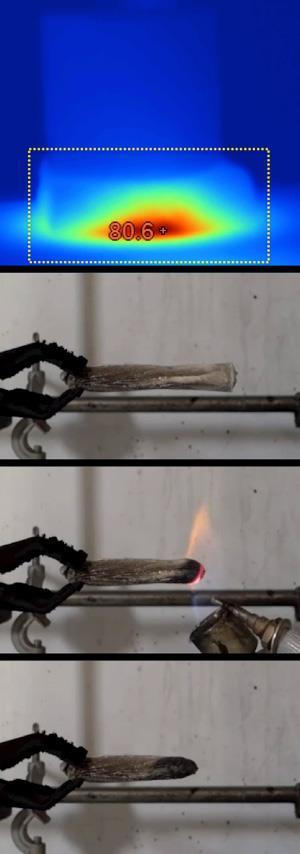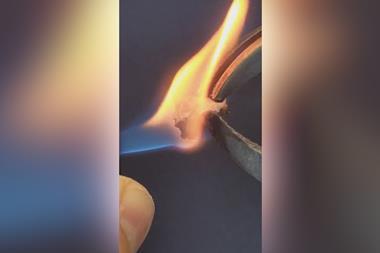Graphene oxide, clay and cellulose nanofibres turned into a cheap, fireproof insulator that performs better than conventional materials

A super-insulator and fire retardant foam has been created by freezing together cellulose nanofibres, graphene oxide and clay nanorods. The material boasts much lower thermal conductivity than expanded polystyrene and polyurethane insulation and, unlike these polymers, the new foam does not need to be impregnated with organic flame retardants. Mechanically stiff and able to sustain considerable load, the foam’s creators believe it could be easily fitted to older buildings without compromising architectural design.
Lennart Bergström from Stockholm University and colleagues produced the highly porous foams by freeze casting suspensions of graphene oxide, sepiolite nanorods and cellulose nanofibres obtained from wood. The nanomaterials are distributed uniformly throughout the structure, adding to the foam’s mechanical strength and moisture and fire resistance. The foam’s thermal conductivity is so low that it would take less than half the amount of the material to insulate a home that it would take using expanded polystyrene.
‘All three of the components are nanosize, which is essential for the super-insulating properties,’ says Bergström. ‘The sepiolite clay is mainly there for fire retardancy, the graphene oxide is there to improve strength and fire retardancy and minimise thermal conductivity and the cellulose is a support material that itself has favourable strength and low thermal conductivity.’ A fourth component is boric acid, which acts as a cross-linker, improving strength and reducing sensitivity to moisture.
‘What these guys have achieved in this paper is unique,’ says Jaime Grunlan, materials scientist at Texas A&M University, US. ‘They simultaneously created something that is almost like an aerogel, but looks to be stronger and has lower thermal conductivity. At the same time it has this huge advantage of being quite nonflammable.’
‘A material like this wouldn’t need extra flame retardants. Right now in the US they are outlawing various brominated flame retardants, but Europe is even more aggressive about this,’ he notes. Although the new material could improve the energy efficiency of buildings, Grunlan says ‘similar types of materials are needed on aircraft, boats and trains. If you want to keep something warm or cool, this can be done more efficiently with adequate insulation. It might also be a good sound insulator.’
Cost should not be a problem, says Grunlan. Bergström agrees: ‘The cost of nanocellulose is going down all the time with the opening up of new plants, graphene oxide is cheap and we might be able to use other sources of carbon – and the clays are very cheap,’ he says. ‘Really, the crucial issue is to develop the technology for mass production.’
‘For up-scaling production, one probably has to move away from freeze casting,’ says Bergström. ‘There are a number of traditional ways of making foam we are looking into, but also non-traditional approaches… We want to develop a technology for continuous production with robust properties.’












No comments yet